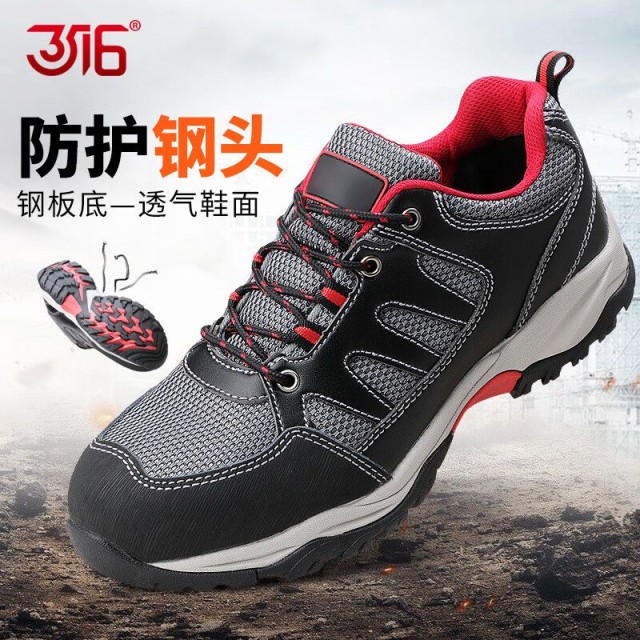Workers in oilfields face some of the most extreme workplace hazards—from crushing machinery impacts to electrical surges and subzero temperatures. Understanding how safety boot features address these risks isn’t just about compliance; it’s about preventing life-altering injuries. This article breaks down the science behind protective footwear and the certifications that validate their performance, helping businesses justify investments in high-quality safety gear.
Oilfield Hazards and Boot Safety Demands
Heavy Machinery Impact: The Role of Toe Protection Standards
Steel or composite toe caps aren’t just bulky additions—they’re engineered to withstand forces exceeding 2,500 pounds of impact. The ASTM F2413-18 standard mandates rigorous testing for toe caps, simulating scenarios like dropped drill pipes or rolling equipment. Research shows boots meeting this standard reduce crush injuries by over 70% in heavy industrial settings.
Key Takeaway:
- ASTM-compliant toe caps absorb and redistribute impact energy, preventing fractures.
- Composite materials (e.g., fiberglass) offer lightweight alternatives to steel without sacrificing protection.
Slippery Surfaces: Chemistry of Slip-Resistant Outsoles
Oilfield slips often occur due to hydrocarbon spills, mud, or wet metal surfaces. High-performance outsoles use hydrocarbon-resistant rubber compounds with deep tread patterns to channel fluids away, maintaining grip even on angled platforms. Studies correlate thicker outsoles (6mm+) with a 50% reduction in slip-related incidents.
Why It Matters:
- Polyurethane (PU) outsoles resist oil degradation better than standard rubber.
- Tread designs mimic automotive tire technology for multidirectional traction.
Extreme Temperatures: Material Science in Thermal Insulation
In Arctic drilling sites, temperatures can plummet below -50°F. Boots with aerogel-insulated liners maintain toe warmth while preventing sweat buildup—a critical feature to avoid frostbite during prolonged exposure. Heat-mapping studies reveal insulated boots keep feet 20°F warmer than non-insulated alternatives in subzero conditions.
Practical Insight:
- Multi-layer insulation balances thermal retention and breathability.
- Reflective foils in liners deflect radiant heat in high-temperature environments.
Decoding Safety Certifications
OSHA Compliance vs. ASTM F2413-18: What Rig Workers Must Know
While OSHA sets workplace safety guidelines, ASTM F2413-18 defines the technical benchmarks boots must meet. For example:
- Impact Resistance (I/75): Toe caps endure a 75-foot-pound force.
- Compression Resistance (C/75): Withstands 2,500 pounds of static pressure.
Compliance Tip:
Boots labeled "ASTM F2413-18 I/C" exceed OSHA’s baseline requirements, offering verified protection.
How EH Rating Protects Against Electrical Hazards
The EH (Electrical Hazard) rating ensures boots can withstand 18,000 volts for 1 minute without current transfer. This is critical for workers near live wires or faulty equipment. Non-conductive materials like vulcanized rubber create a barrier, reducing electrocution risks by 90% compared to standard work shoes.
Real-World Impact:
- EH-rated boots prevent ground-path shocks, common in wet conditions.
- Leather uppers treated with water-repellent finishes enhance safety in damp environments.
Beyond Compliance: Boot Features That Prevent Real-World Injuries
Case Study: Puncture-Resistant Midsoles in Offshore Drilling
A North Sea rig study found that puncture-resistant midsoles (tested to ASTM F2413-18’s PR standard) reduced foot penetrations from sharp debris by 85%. These midsoles use layered Kevlar or steel mesh to stop nails and metal shards without adding stiffness.
Lesson Learned:
- Flexible puncture guards improve mobility without compromising safety.
Heat Mapping Data: How Insulation Maintains Toe Safety at -50°F
Thermal imaging of workers in Alaska revealed that boots with aerogel-lined toe boxes maintained safe skin temperatures for 8+ hours, while standard boots failed within 2 hours. This technology prevents frostbite during extended shifts in freezing conditions.
Proactive Solution:
- Combine insulation with moisture-wicking liners to manage sweat in extreme cold.
Invest in Safety That Works
For distributors and bulk buyers, prioritizing ASTM-certified, hazard-specific boots means equipping workers with reliable protection against oilfield dangers. 3515’s manufacturing expertise ensures every pair meets these rigorous standards, blending advanced materials with real-world durability.
Your Next Step:
Partner with 3515 to source boots engineered for oilfield safety—where compliance and injury prevention converge.
Related Products
- Safety Footwear Wholesale Manufacturer for Custom OEM/ODM Production
- Wholesale Safety Footwear Manufacturer for Bulk & Custom OEM Orders
- Wholesale Anti-Smash & Puncture-Proof Safety Shoes Custom Manufacturing for Brands
- Factory-Direct Wholesale Canvas Boots with High-Traction Rubber Soles
- Wholesale Customizable Suede Safety Boots - Puncture-Proof with Velcro Closure
Related Articles
- How Steel Toe Boots Meet Industry Safety Standards and Reduce Workplace Injuries
- How Steel Toe Boots Deliver Financial and Safety Returns in High-Risk Workplaces
- How Steel Toe Shoes Prevent Injuries: The Science Behind Workplace Safety
- How to Choose Steel Toe Shoes That Balance Safety and Comfort
- Steel Toe Work Boots: Balancing Safety and Comfort for Demanding Jobs



















